Finlux 26F7030 Review
Finlux 26F7030
A 26-inch 3D TV that costs just £240 and isn't bad at all, that'll be the Finlux 26F7030.
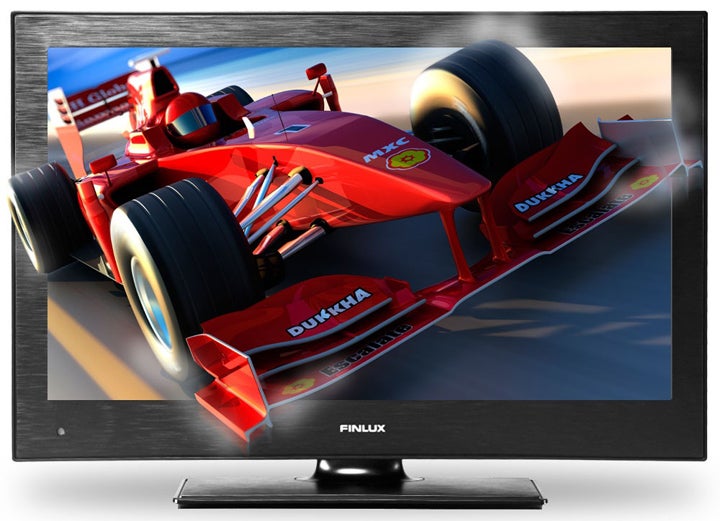
Verdict
Pros
- Incredibly cheap for what it offers
- Fair 3D and 2D performance
- Playback from and recording to USB devices
Cons
- Poor sound quality
- Very limited viewing angle
- Average black level response
Key Specifications
- Review Price: £239.99
- 26in LCD TV with edge LED lighting
- Passive 3D playback
- full HD native resolution
- multimedia playback via USB
- Four pairs of 3D glasses included
Introduction
Given our oft-stated belief that 3D always works best on a really big screen, it doesn’t seem likely that we’re going to get on well with the Finlux 26F7030. For despite sporting passive 3D technology and shipping with four pairs of 3D glasses, its 16:9-ratio screen is only 26-inches across, the smallest 3D TV we’ve ever tested.
Finlux 26F7030 Specs
The movie fan in us immediately fears the worst. For even if you truly fancy watching a 3D film on such a small screen in a bedroom/kitchen/study/conservatory, experience suggests that the impact of the 3D will be limited by the image’s smallness. Plus the 3D effect will tend to look like some kind of extra-dimensional hole ripped into your room, rather than the immersive experience you’d get if the 3D image filled more of your field of vision.
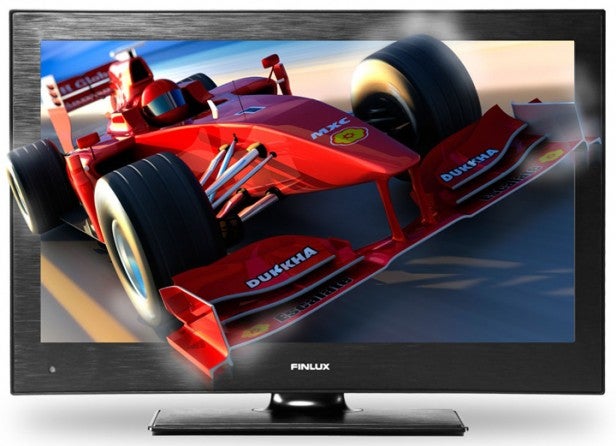
Our inner gamer, though, actually can just about envisage using a 26-inch 3D TV. After all, most gaming in a typical household takes place on a relatively small second TV, and we’ve also found (rather strangely) that we tend to game while sitting closer to smaller screens than we would while just watching TV or a film.
Then there’s the fact that we’ve generally found 3D to be more typically useful and worthwhile when gaming than it is with TV and films.
In short, then, while we’re not sure we could imagine settling down to watch Avatar in 3D on the Finlux 26F7030, a bit of 3D Gran Turismo 5 could definitely be on the cards. Assuming the set’s 3D efforts are actually watchable, that is – something that has to be in doubt given that the Finlux 26F7030 can be yours for just £240.
Even by Finlux’s routinely ‘high value’ approach to TV the price of the Finlux 26F7030 looks incredibly cheap. You’d normally struggle to find a ‘normal’ 26-inch TV for so little money, never mind one that also carries 3D.
The presumption has to be that in order to make such a price possible, Finlux has seriously had to scrimp and save elsewhere. But actually, while it’s not going to break any feature list records, the Finlux 26F7030 has got more going on than we might have anticipated.
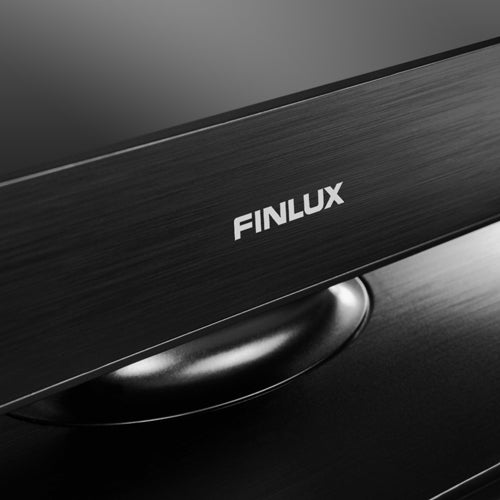
Finlux 26F7030 Design
The Finlux 26F7030′ design, for instance, is illuminated by a pleasingly textured finish to the bezel, and the surprising slimness of the set’s rear. Its bezel is quite wide by modern standards, but overall the Finlux 26F7030 can’t really be accused of looking as cheap as it is.
The Finlux 26F7030’s thin rear proves right away that it uses edge LED illumination rather than the old-school CCFL system we might have expected to find on such a cheap TV.
Connections are solid. There are two HDMIs, an RF tuner input, a D-Sub PC port and a USB input. And to our surprise this USB port can be used for both playing a few video, photo and music file formats into the TV, and for recording from the built-in Freeview tuner to USB flash and hard drives. Impressive.
The Freeview tuner is not a HD version, unfortunately, but while we would normally be very disappointed by this, it’s not such a painful loss to us on a 26-inch TV as it would be on a larger screen.
The Finlux 26F7030 doesn’t have any Smart TV or DLNA streaming functionality onboard, but it wouldn’t really have been reasonable to expect such features at the 26F7030’s price.
Calling up the Finlux 26F7030’s colourful but determinedly low-res onscreen menus reveals another surprise or two. For instance, there’s an option for adjusting the set’s backlight that includes an ‘auto’ option, revealing that unlike some budget TVs, this one carries a dynamic contrast system.
There’s also noise reduction, and even an ‘advanced picture settings’ submenu in which you can adjust the colour temperature, turn off overscanning, activate a black booster for HDMI sources, and shift the colour balance along a simple red-to-green line.
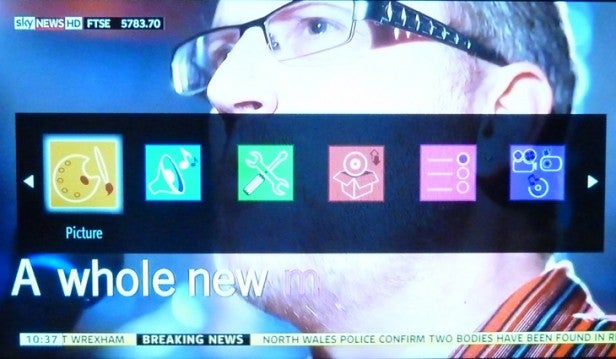
Finlux 26F7030 3D
Given that its 3D abilities definitely give the Finlux 26F7030 its ‘headline’, lets kick off by looking at how effective they are. And the short answer is that they’re quite a bit better than expected.
For starters, they’re surprisingly colourful and punchy, and look quite sharp too. Also, the screen’s small nature hides the traditional passive shortcomings of horizontal line structure and jagged edges. And as usual pictures prove more relaxing over longer viewing/gaming sessions than most active 3D ones, too.
The TV’s sense of 3D depth is fair (though as predicted, the smallness of the screen rather reduces that depth’s impact). Even motion doesn’t look nearly as juddery as expected considering how little picture processing the Finlux 26F7030 has.
There are, though, a couple of unexpected flaws. First, despite LG’s claims that passive 3D doesn’t cause crosstalk, on the Finlux 26F7030 it does. Crosstalk is clearly and regularly apparent over distant objects, especially if those objects are dark against light backgrounds, like the turrets of the Disney Castle in the 3D branding sequence that prefaces Tangled on 3D Blu-ray.
The fact that the crosstalk is restricted to distant content means it doesn’t appear as regularly as it does on some active 3D TVs, but it can be quite aggressive and thus distracting whenever it does appear.
The other problem is a strange flickering artefact that sometimes appears over large moving objects in the 3D image, or when there’s a rapid cut between two shots. Where motion is concerned, the moving image appears to shimmer almost subliminally in and out of the image, while between cuts the flicker appears in the form of a momentary black frame that’s drawn down the screen from top to bottom.
The flickering issues crop up much more often with Blu-ray movies than 3D games, and is arguably so subtle that not everyone will even notice it. But if you do, you might sometimes find yourself looking out for the flicker, and thus being distracted from the 3D action.
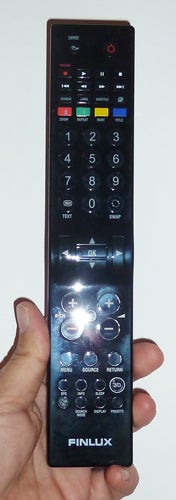
Still, considering the Finlux 26F7030’s size and, above all, affordability, the fact that its 3D images are as watchable as they are is borderline miraculous.
Finlux 26F7030 Picture Quality
Switching to HD 2D, the sense of Finlux’s set punching above its weight continues. For starters, it’s a huge relief to discover during dark scenes that the Finlux 26F7030 suffers barely at all with the sort of backlight inconsistencies so common in the LCD world (and which were actually especially problematic on the Finlux 32F6030-T a while back). Even the corners and extreme edges of the Finlux 26F7030’s pictures sport pretty much the same level of black level as the image’s centre during dark scenes, giving dark scenes an even look that underlines how annoyingly distracting backlight inconsistencies can be when they appear on other TVs.
Also surprising during dark scenes is how much shadow detail you can see. The Finlux 26F7030‘s dynamic contrast engine isn’t as sophisticated as some; certainly it sometimes reacts rather slowly to changes in the source image. But it does at least appreciate that there’s no point taking so much brightness out of the portrayal of dark scenes that subtle details get crushed into oblivion.
Another pleasant surprise, is how crisp and detailed HD images look. The screen’s full HD native resolution probably plays a part in this, but also very respectable for the Finlux 26F7030’s price level is its motion handling. It’s only a 50Hz set, yet levels of judder and smearing aren’t by any means excessive, meaning that even during action scenes you’re never in doubt that you’re watching an HD picture. Let’s not forget, either, that this HD quality is being delivered on a mere 26-inch screen, proving the point that HD really isn’t just for big screens.
Colours are slightly short of dynamism during dark scenes, but tones are more subtly delineated than we would have expected, and bright scenes look winningly punchy and vibrant.
If there’s a disappointment about the Finlux 26F7030’s HD pictures, it’s that the set’s black level response isn’t especially profound. Parts of the picture that should look black instead look rather grey, no matter how much you tinker with the backlight settings. The contrast issues are exacerbated, moreover, if you have to watch from an angle of more than around 35 degrees.
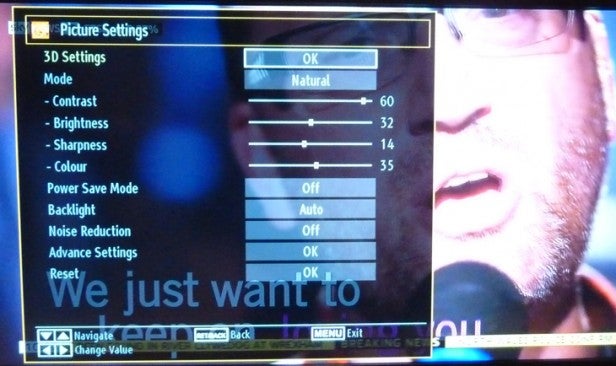
From a standard ‘opposite’ viewing position, however, the extent of the greyness isn’t as bad as might have been expected on such a small and cheap TV. Plus, as noted before, its impact is further reduced by the fact that you can still see a decent amount of depth-bringing shadow detail in dark scenes.
Probably the weakest part of the Finlux 26F7030’s picture performance is its standard definition handling. This looks a little soft and exhibits a much less nuanced colour performance than you get with HD. This leaves skin tones in particular tending to look a bit plasticky. However, motion blurring doesn’t increase as much as might have been expected, and a positive spin on the slight softness noted a moment ago is that it ‘smoothes away’ typical digital broadcast source noise like MPEG compression artefacts and background ‘twitching’.
Having bigged the Finlux 26F7030 up as a potential budget gaming monitor, its input lag measurement is particularly important. So it’s a relief to find that it averages a very respectable 30ms. It was a little odd to find that even using the TV’s game mode with noise reduction turned off the measured input lag varied between just 6ms and as much as 60ms. But for the most part it was in the 30-34ms zone.
Finlux 26F7030 Sound Quality
The Finlux 26F7030’s audio is its weakest all-round performance point. We’re used to small, slim TVs struggling to deliver any real volume or dynamic range, but the 26F7030 actually manages to sound worse than most, as pretty much all of its audio gets crammed into a very compressed mid-range, with hardly any treble or bass extension.
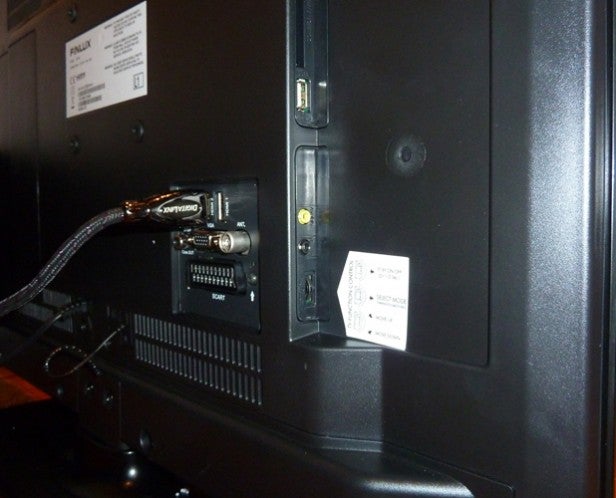
In other words, while the TV as it stands is just about able to deliver the goods with simple TV fare, if you want to use the screen for serious gaming or movie viewing, you should think of adding some sort of external stereo sound system, even it’s only a basic one.
Finlux 26F7030 Verdict
Although there have been – and likely will be in the future, too – a few stumbles along the way, overall Finlux is increasingly starting to look like something of a diamond in the budget TV rough.
Certainly if the surprisingly competent Finlux 26F7030 is anything to go by, the extraordinary rate with which Finlux keeps refreshing its TV ranges is increasingly starting to look indicative of a brand genuinely keen to keep offering buyers more quality as soon as it becomes available. And if that’s not an attitude worth praising here, we don’t know what is.
How we test televisions
We test every TV we review thoroughly over an extended period of time. We use industry standard tests to compare features properly. We’ll always tell you what we find. We never, ever, accept money to review a product.
Trusted Score
Score in detail
-
Features 7
-
3D Quality 7
-
Value 10
-
Design 7
-
2D Quality 7
-
Sound Quality 5

